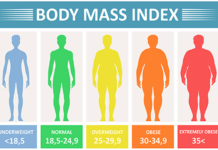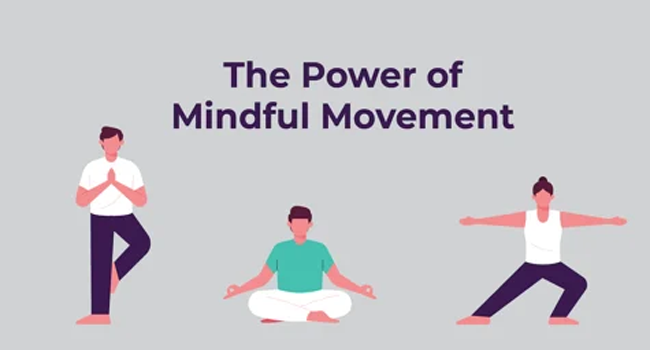Introduction:
In a modern, rapid-paced world in which strain and anxiety appear to be omnipresent, the pursuit of physical and intellectual well-being has become increasingly critical. Mindful motion practices, which include yoga and Pilates, have emerged as practical tools to navigate the demanding situations of contemporary existence. Rooted in historical traditions but tailored to modern existence, those disciplines provide a holistic technique to health, focusing on the harmonious integration of body, thoughts, and spirit. This exploration delves into the profound benefits of yoga and Pilates, losing light on how those practices domesticate mindfulness, enhance bodily fitness, and foster essential well-being.
Origins and Philosophies:
Yoga: Originating in historic India, yoga is a multifaceted gadget encompassing physical postures (asanas), breath control (pranayama), meditation, and moral principles. Its philosophical foundation, articulated in texts like the Yoga Sutras of Patanjali, emphasizes the union of individual focus with the regular divine focus.
Pilates: Developed by Joseph Pilates in the early 20th century, Pilates draws ideas from diverse movement modalities, including yoga, martial arts, and gymnastics. Pilates’ middle principles revolve around breath, concentration, centring, manipulation, precision, and waft to create a balanced body and thoughts.
Physical Benefits:
Yoga: Through dynamic postures, stretching, and breath focus, yoga promotes flexibility, strength, and patience. Asanas target unique muscle groups, enhancing tone and function whilst enhancing joint mobility and stability. Additionally, yoga’s emphasis on proper alignment prevents injury and alleviates pain.
Pilates: With its recognition of core electricity, Pilates complements overall balance and posture, decreasing the threat of musculoskeletal imbalances and injuries. By attractive deep abdominal muscle tissue, pelvic ground, and returned muscular tissues, Pilates cultivates a sturdy, resilient core, which is the muse for efficient movement and spinal health.
Mental and Emotional Well-being:
Beyond physical aspects, yoga is robust for stress discount and emotional regulation. Mindful respiration techniques and meditation practices calm the worried gadget, promoting relaxation and mental readability. Moreover, yoga cultivates self-recognition and compassion, fostering a fantastic mindset and emotional resilience.
Pilates: By emphasizing targeted concentration and particular motion styles, Pilates complements mindfulness and intellectual concentration. The thoughts-body connection fostered in Pilates sessions promotes a feeling of inner calm and mental readability, supporting individuals to alleviate tension and manipulate stress more effectively.
Mindfulness and Presence:
Yoga: Central to yoga philosophy is the idea of mindfulness, or gift-moment recognition. Practising yoga cultivates a deep feeling of presence, anchoring practitioners within the right here and now. By synchronizing breath with motion, yoga fosters a nation of flow, in which the thoughts will become absorbed inside the present experience.
Pilates: Similarly, Pilates encourages conscious movement, in which practitioners pay attention to the subtleties of every exercise. By being attracted to the body’s sensations and movement patterns, people broaden extra body attention and proprioception, enhancing their ability to move gracefully and efficiently.
Stress Reduction and Relaxation:
Yoga: Integrating breathwork, meditation, and mild movement in yoga sequences induces the rest reaction, counteracting the body’s strain response. Regular yoga lowers degrees of cortisol, the stress hormone, while boosting the manufacturing of endorphins, selling an experience of well-being and contentment.
Pilates: While Pilates is renowned for its physical challenges, its emphasis on controlled, flowing moves fosters relaxation and mental calmness. By selling the right breathing strategies and mindful engagement with every exercise, Pilates sessions shift meditation, permitting practitioners to launch tension and unwind.
Holistic Wellness:
Yoga: As a holistic practice, yoga addresses not only most spartan bodily fitness but also mental, emotional, and religious well-being. Yoga promotes usual well-being and power by fostering concord within the frame well-being triad, empowering individuals to have balanced, pleasant lives.
Pilates: Similarly, Pilates promotes a holistic fitness method, spotting the interconnectedness of bodily, intellectual, and emotional well-being. By cultivating centre strength, flexibility, and awareness of movement patterns, Pilates helps people attain top-rated fitness and energy.
Flexibility and Mobility:
Yoga: One of yoga’s most identified blessings is its ability to beautify flexibility and mobility. Through a diverse variety of asanas targeting notable muscle corporations and joints, yoga promotes lengthening and the launch of tight muscle groups, growing the usual flexibility. Improved flexibility now complements physical performance, reduces the hazard of injuries, and helps wholesome growing older.
Pilates: While Pilates won’t emphasize flexibility to the same extent as yoga, its focus on controlled moves through a full range of motion contributes to extended flexibility and joint mobility. Pilates exercises to stretch and elongate muscle groups while selling balanced muscle development, progressing overall flexibility and variety of motion.
Core Strength and Stability:
Yoga: Many yoga poses require the lively engagement of the centre muscular tissues to preserve balance and alignment. Asanas, Plank, Boat, and Warrior III boost the abdominals and obliques, decreasing back muscular tissues and promoting middle balance and spinal aid. A robust core not only enhances bodily performance in yoga but also interprets to progress posture and decreases the chance of back pain in daily activities.
Pilates: Core energy lies in the coronary heart of Pilates practice, with sports mainly designed to target the deep abdominal muscles, pelvic ground, and muscular tissues surrounding the spine. By specializing in centre engagement and balance throughout every movement, Pilates develops a sturdy and resilient middle that is the powerhouse for efficient motion and injury prevention.
Rehabilitation and Injury Prevention:
Yoga: Due to its gentle yet effective nature, yoga is increasingly used as a healing device for injury rehabilitation and prevention. Yoga poses may be modified to house individuals recuperating from injuries or dealing with continual conditions, assisting in restoring mobility, energy, and stability. Additionally, the mind-frame connection cultivated in yoga promotes self-focus and conscious movement, lowering the threat of destiny injuries.
Pilates: Originally evolved as a rehabilitation technique, Pilates is famous for its potential to address musculoskeletal imbalances and save injuries. Its low-impact, controlled actions are gentle on the joints, making it appropriate for people recovering from injuries or handling situations together with returned pain or arthritis. Pilates’ emphasis on proper alignment and balanced muscle development promotes top-rated biomechanics, decreasing the chance of overuse accidents and enhancing everyday resilience.
Conclusion:
In the quest for holistic well-being, conscious movement practices, including yoga and Pilates, provide a transformative course closer to more fitness, power, and internal peace. Through physical postures, breathwork, meditation, and aware motion, these disciplines empower people to domesticate energy, flexibility, and resilience, each on and stale the mat. Yoga and Pilates catalyze non-public growth, self-discovery, and holistic wellness by nurturing the body-mind connection and fostering gift-second attention. As we embody those historical practices inside the current world, we free up the profound benefits of conscious movement, ushering in a new generation of health, power, and mindful dwelling.






















